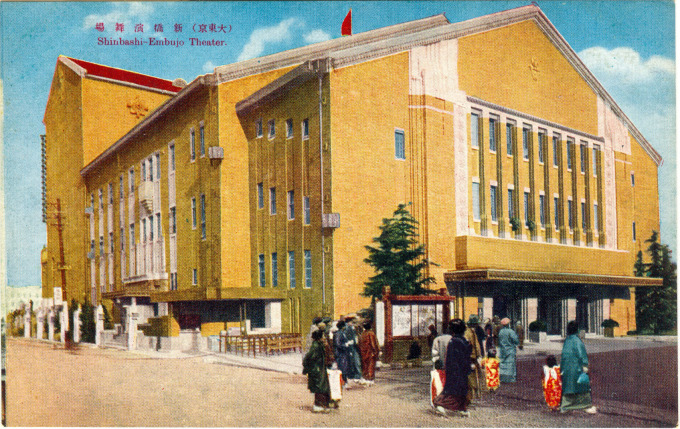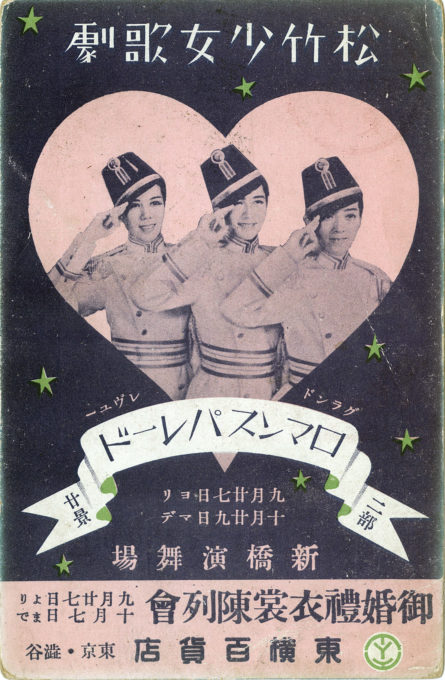
Shimbashi Enbujo Theater, Shimbashi, Tokyo, c. 1930. Now known as a kabuki venue, the Enbujo was built by an entrepreneurial manager of a Shimbashi geisha house. It opened in 1925 with the premiere of the Azuma Odori, a merger of spring and autumn traditional dance productions by Shimbashi geisha.
See also:
Miyako Odori, Koyoto, c. 1940.
Shimbashi District, 1900-1950.
Kabuki Theatre, Tokyo, 1911-1951.
Nippon Theater (Nichigeki), Tokyo, c. 1930.

“Romance Parade” Grand Revue promotional postcard, Shimbashi Enbujo Theater, Shimbashi, Tokyo, c. 1930. While the Enbujo is best known today for its varied repertoire of kabuki, the theater in the 1930s was also a venue for Western-style revue a la Takarazuka.
“The Shimbashi Enbujo theatre was originally built as a venue for the geisha of the Shimbashi quarter to perform their spring and autumn traditional dance performances and, especially, the annual Azuma Odori which premiered at the Enbujo in 1925 and has been performed there every year since.
“The theater contruction was funded by Kawamura Tokutarō, manager of the Morikawa geisha house, who raised two million yen in capital and established the Shinbashi Enbujō Corporation. The site, by chance, was formerly that of the Matsudaira clan residence which serves as the setting for the kabuki play ‘Kagamiyama Kokyō no Nishikie’. Construction began in 1923, was halted following the 1923 Great Kantō earthquake, but was completed in 1925.
“The theater entered into a contract in 1940 with Shōchiku, a major film and theatre production company, which is today the chief kabuki production company. The original theater structure was destroyed in the Allied bombing of Tokyo during World War II, but was reconstructed in 1948.”
– Wikipedia

